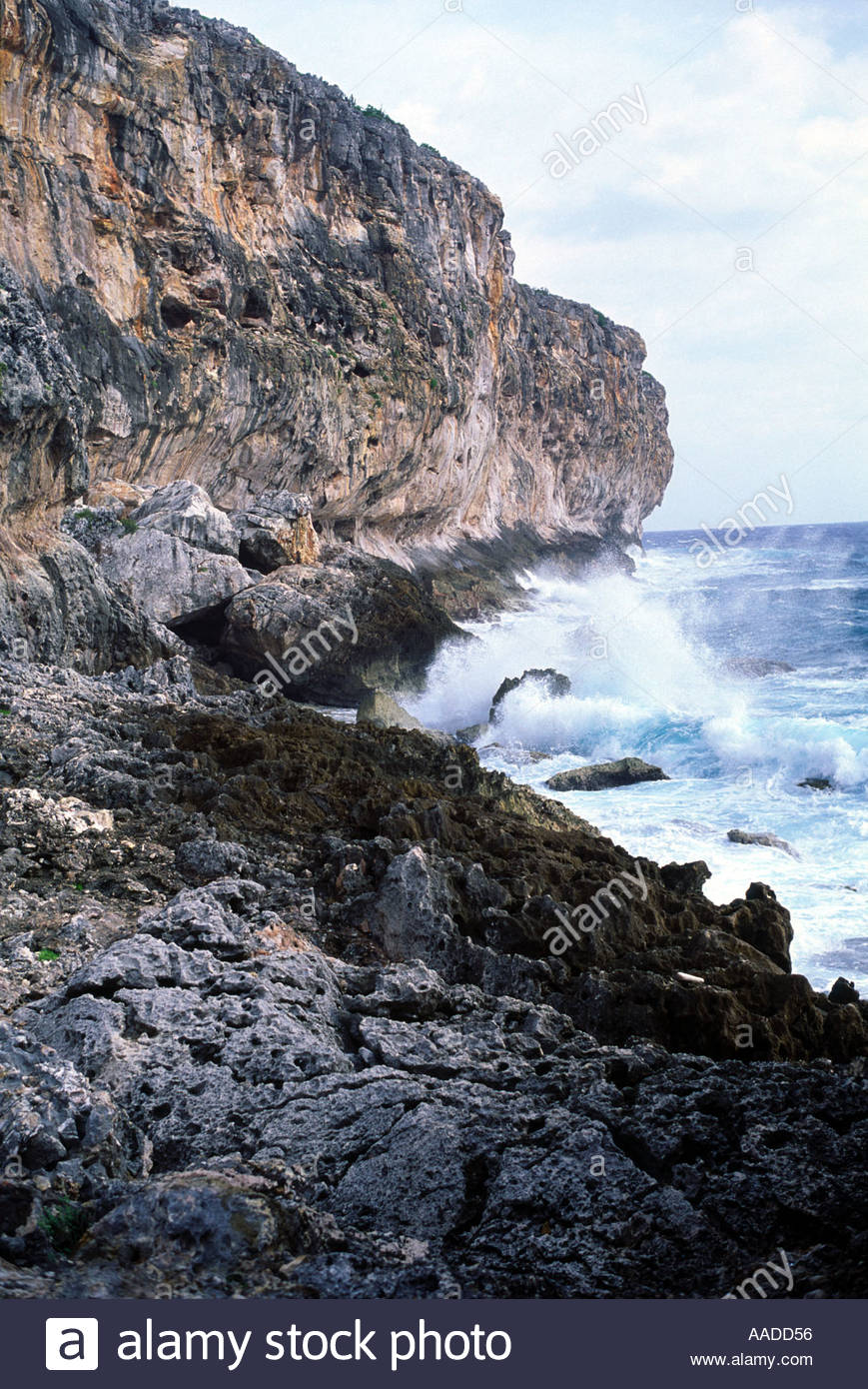Growth and development of notch speleothems from Cayman Brac, British West Indies

Response to variable climatic conditions over the last 125,000 years
By Jones, Brian;Zheng, Erjun;Li, Long
The spectacular wave-cut notch on Cayman Brac, which is 6 m above sea level, formed during Marine Isotope Stage 5e highstand, 128,000 to 116,000 years ago. On Cayman Brac, the notch is commonly decorated with speleothems (mostly stalactites) that are formed of calcite, aragonite and micrite. These notch speleothems are characterized by numerous growth zones that are delimited by minor and major hiatal surfaces. U/Th dating indicates that the major growth phases, which took place 73,000 to 59,000 years ago, 46,000 to 49,000 years ago, and 4000 to 1000 years ago, were separated by periods when erosion and minimal precipitation were the norm. The δ18OVPDB values range from -6.5‰ to +0.3‰ with a mode between -2 and -4‰ and an average of -3.1‰, whereas the δ13CVPDB values range from -10.5‰ to +1.9‰ with one mode between -2.0 and -3.0‰, a second mode between -7.0 and -8.0‰, and an overall average of -6.1‰. The δ18O and δ13C values co-vary. The δ18OVPDB and δ13CVPDB values are similar to those from the “young” (<125,000 years old) cave speleothems but heavier than those from the “old” (>125,000 years) cave speleothems. Today, with the little evidence of active speleothem growth in the notch or caves, Cayman Brac is characterized by dry sub-tropical forest and shrubland with xeric components on the elevated eastern end of the island. Available data indicate that most of the speleothem growth took place during the transitions from Marine Isotope Stage (MIS) 5a to 4, and MIS2 to 1. These transitional periods, which define the onset and termination of glaciation in the northern latitudes, were probably characterized by higher rainfall and development of tropical rainforests. It is evident that notch speleothems, like those from Cayman Brac, are valuable archives of the paleoclimate conditions that have existed since the highstand associated with MIS5e.
Publication:Sedimentary Geology, Volume 373, p. 210-227.Pub Date:October 2018DOI:10.1016/j.sedgeo.2018.06.005 Bibcode:2018SedG..373..210J
SOURCE: https://ui.adsabs.harvard.edu/abs/2018SedG..373..210J/abstract





